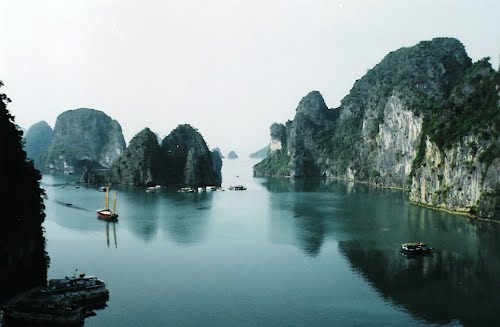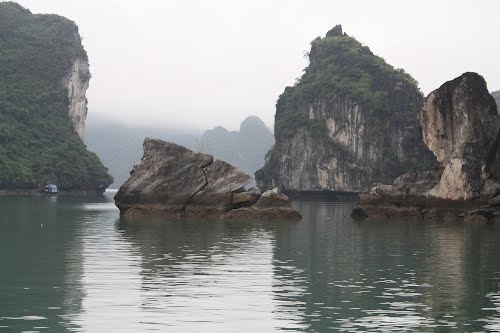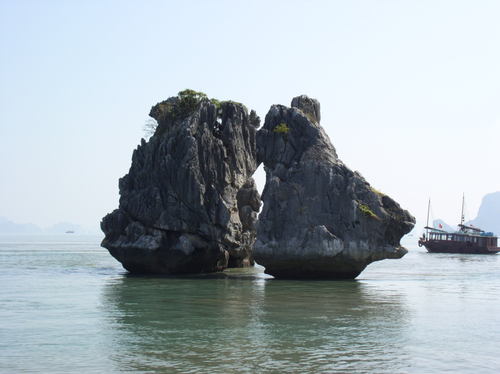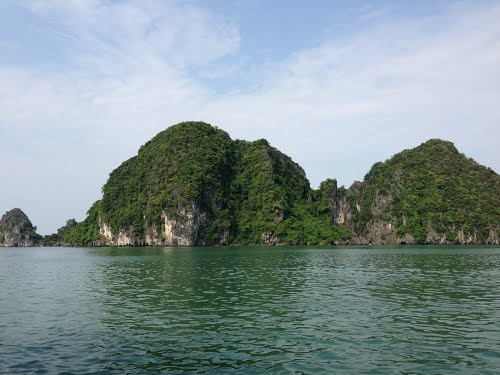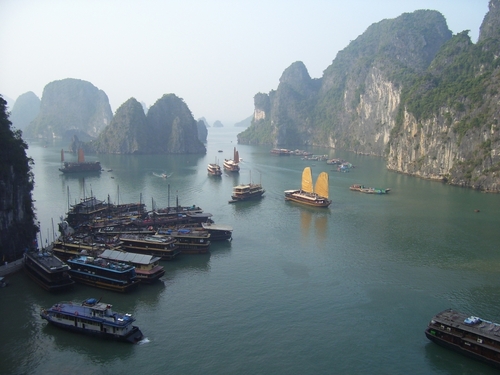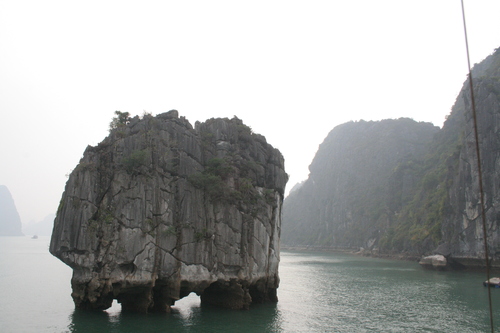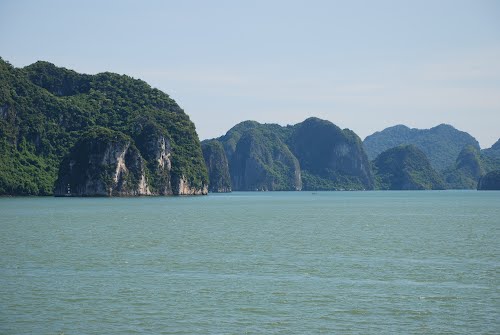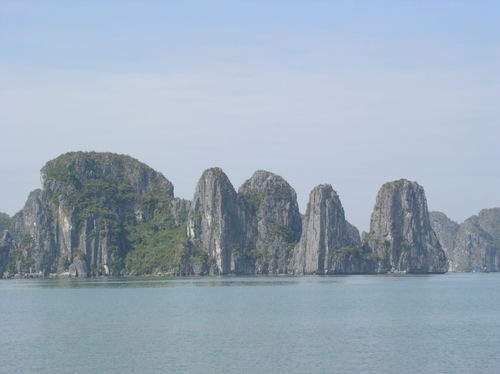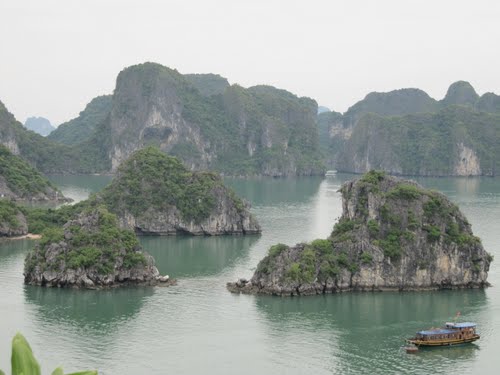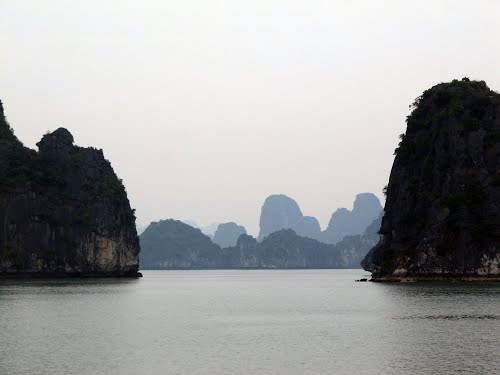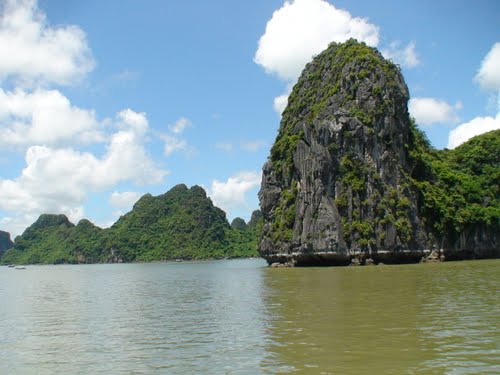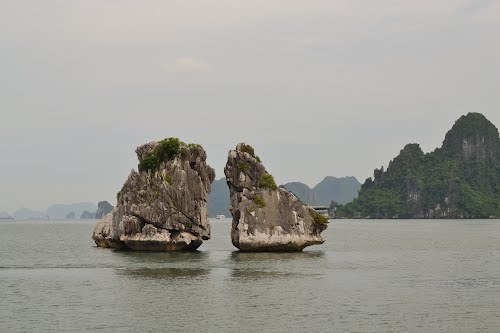Ha Long Bay is a UNESCO World Heritage Site, and a popular travel destination, in Quang Ninh Province, Vietnam. Administratively, the bay belongs to Ha Long City, Cam Pha town, and the part of Van Don District. The bay features thousands of limestone karsts and isles in various sizes and shapes. Ha Long Bay is a center of a larger zone which includes Bai Tu Long bay to the northeast, and Cat Ba islands to the southwest. These larger zones share similar geological, geographical, geomorphological, climate, and cultural characters.
Ha Long Bay has an area of around 1,553 km², including 1,960–2,000 islets, most of which are limestone. The core of the bay has an area of 334 km² with a high density of 775 islets. The limestone in this bay has gone through 500 million years of formation in different conditions and environments. The evolution of the karst in this bay has taken 20 million years under the impact of the tropical wet climate. The geo-diversity of the environment in the area has created biodiversity, including a tropical evergreen biosystem, oceanic and sea shore biosystem. Hạ Long Bay is home to 14 endemic floral species and 60 endemic faunal species.
Historical research surveys have shown the presence of prehistorical human beings in this area tens of thousands years ago. The successive ancient cultures are the Soi Nhu culture around 18,000–7000 BC, the Cai Beo culture 7000–5000 BC and the Ha Long culture 5,000–3,500 years ago. Hạ Long Bay also marked important events in the history of Vietnam with many artifacts found in Bai Tho Mount, Dau Go Cave, Bai Chay.
In 1994, the core zone of Hạ Long Bay was listed by UNESCO as a World Heritage Site according to criterion vii, and listed for a second time according to criterion viii.
History
Soi Nhu culture (16,000–5000 BC)
Located in Ha Long and Bai Tu Long are archaeological sites such as Me Cung and Thien Long. There are remains from mounds of mountain shellfish, spring shellfish, some fresh water mollusc and some rudimentary labour tools. The main way of life of Soi Nhu's inhabitants included catching fish and shellfish, collecting fruits and digging for bulbs and roots. Their living environment was a coastal area unlike other Vietnamese cultures, for example, like those found in Hoa Bình and Bac Son.
Cai Beo culture (5000–3000 BC)
Located in Ha Long and Cat Ba island, its inhabitants developed to the level of sea exploitation. Cai Beo culture is a link between Soi Nhu culture and Ha Long culture.
Feudal period
History shows that Ha Long Bay was the setting for local naval battles against Vietnam's coastal neighbors. On three occasions, in the labyrinth of channels in Bach Dang River near the islands, the Vietnamese army stopped the Chinese from landing. In 1288, General Tran Hưng Dao stopped Mongol ships from sailing up the nearby Bach Dang River by placing steel-tipped wooden stakes at high tide, sinking the Mongol Kublai Khan's fleet.
During the Vietnam War, many of the channels between the islands were heavily mined by the United States navy, some of which pose a threat to shipping to this day.

